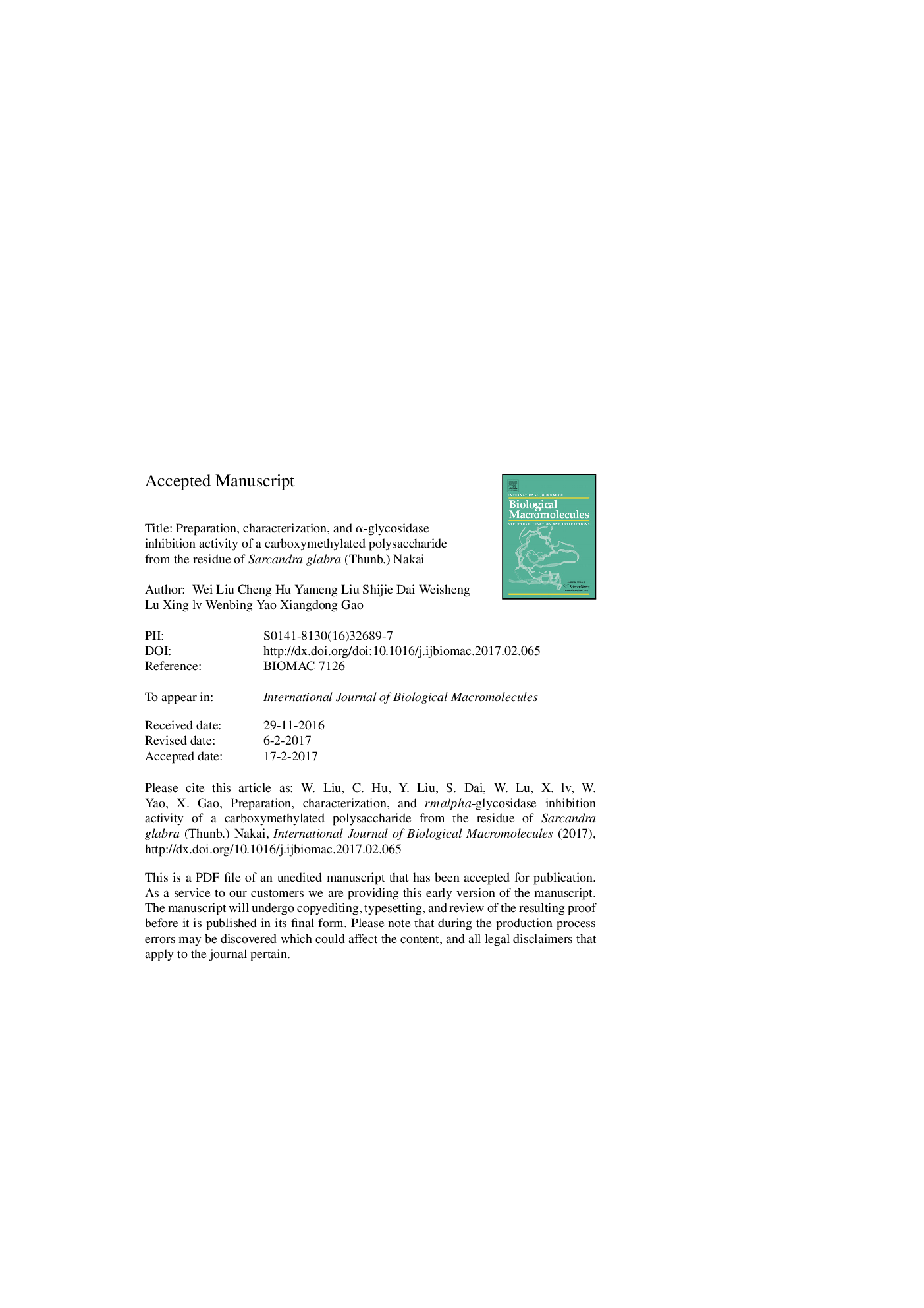| Article ID | Journal | Published Year | Pages | File Type |
|---|---|---|---|---|
| 5512078 | International Journal of Biological Macromolecules | 2017 | 39 Pages |
Abstract
A carboxymethylated polysaccharide (CMSERP) was prepared from the residue of Sarcandra glabra (Thunb.) Nakai. CMSERP was mainly composed of galacturonic acid (GalA), glucose (Glc), galactose (Gal), glucuronic acid (GlcA), arabinose (Ara), rhamnose (Rha), xylose (Xyl), ribose (Rib), and fucose (Fuc) at the ratio of 29.79:19.30:11.92:6.32:4.68:3.95:3.39:2.31:1.00. The primary structure features of CMSERP were determined to be a pectin like polysaccharide according to FT-IR, NMR, and HPAEC-PAD. The results of HPSEC-MALLS-RID and DLS indicated the Mw, Mn, Mz, and S2Z1/2 of CMSERP were 5.515 Ã 104 g/mol, 1.566 Ã 104 g/mol, 1.510 Ã 106 g/mol, and 62.8 (±1.2%) nm, respectively. TEM and AFM revealed CMSERP was dispersed in 0.05 M sodium sulfate but aggregated in water. Moreover, a high α-glucosidase inhibition activity (83.38% ± 2.30% at 1000 μg/mL) of CMSERP which is higher than that of acarbose was observed. The results proved the effects of carboxymethylation on poor water-soluble polysaccharides and explore a potential α-glucosidase inhibitor which from abandoned extracted residue for the functional foods and pharmaceutical industries.
Keywords
Related Topics
Life Sciences
Biochemistry, Genetics and Molecular Biology
Biochemistry
Authors
Wei Liu, Cheng Hu, Yameng Liu, Shijie Dai, Weisheng Lu, Xing lv, Wenbing Yao, Xiangdong Gao,
